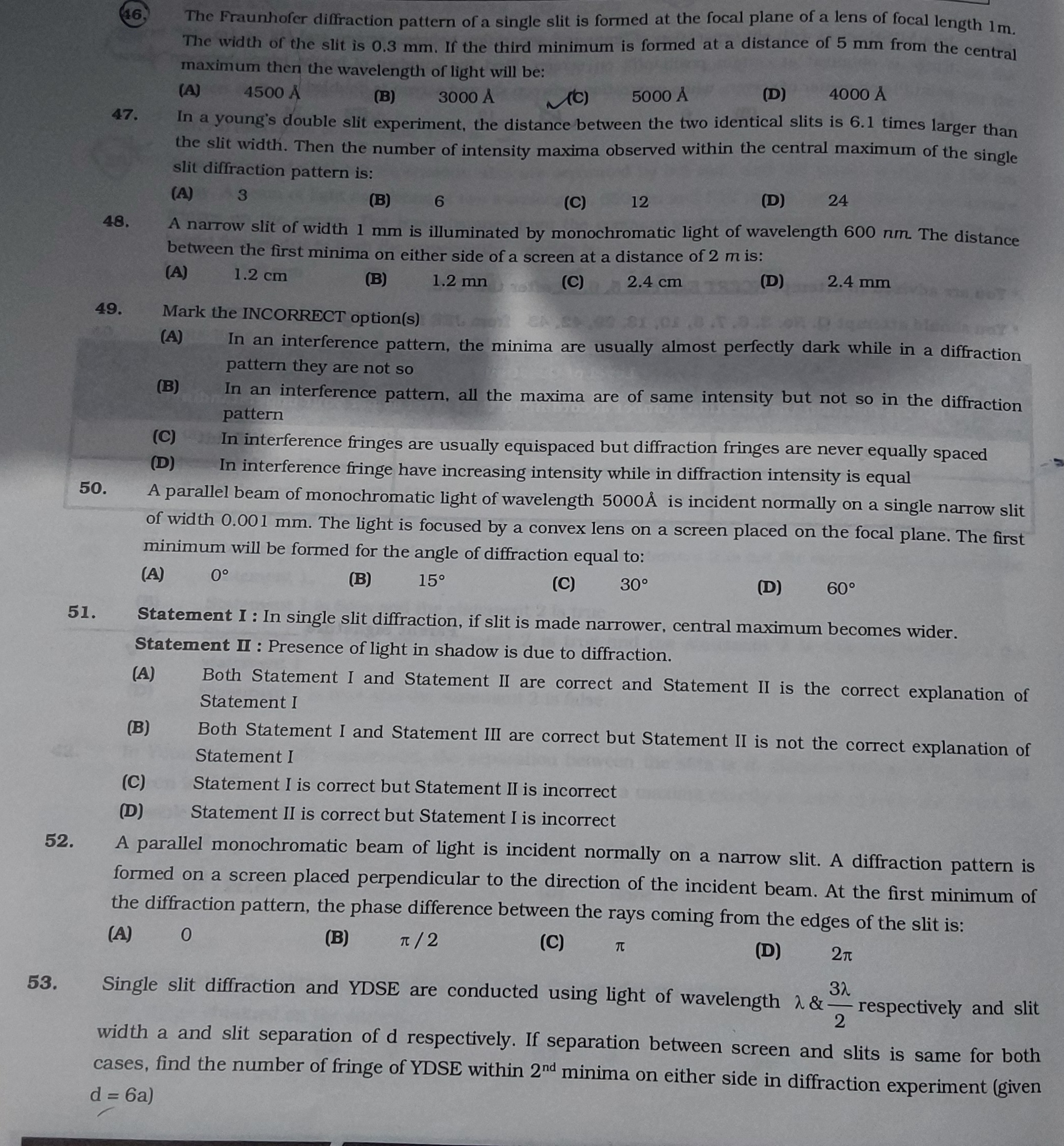Question
Question: The Fraunhofer diffraction pattern of a single slit is formed at the focal plane of a lens of focal ...
The Fraunhofer diffraction pattern of a single slit is formed at the focal plane of a lens of focal length 1m. The width of the slit is 0.3 mm. If the third minimum is formed at a distance of 5 mm from the central maximum then the wavelength of light will be:

4500 Å
3000 Å
5000 Å
4000 Å
5000 Å
Solution
The position of the minima in a single-slit Fraunhofer diffraction pattern is given by asinθn=nλ, where a is the slit width, θn is the angle of diffraction for the n-th minimum, λ is the wavelength, and n=1,2,3,….
When the diffraction pattern is formed at the focal plane of a lens, the distance yn of the n-th minimum from the central maximum is related to the angle θn by tanθn=fyn, where f is the focal length. For small angles, sinθn≈tanθn≈fyn.
Therefore, the formula becomes: afyn=nλ
Given: Slit width, a=0.3mm=0.3×10−3m Focal length, f=1m For the third minimum, n=3. Distance of the third minimum from the central maximum, y3=5mm=5×10−3m.
Substitute these values into the equation: (0.3×10−3m)×1m5×10−3m=3×λ
Solving for λ: λ=3(0.3×10−3)×(5×10−3) λ=31.5×10−6 λ=0.5×10−6m λ=5×10−7m
To convert this wavelength to Angstroms (Å), we use the conversion 1m=109A˚: λ=5×10−7×109A˚ λ=5000A˚
